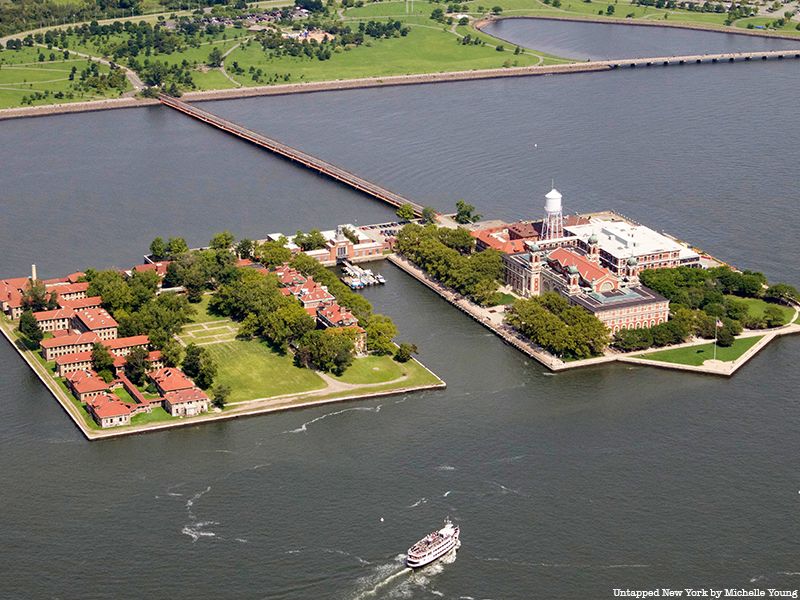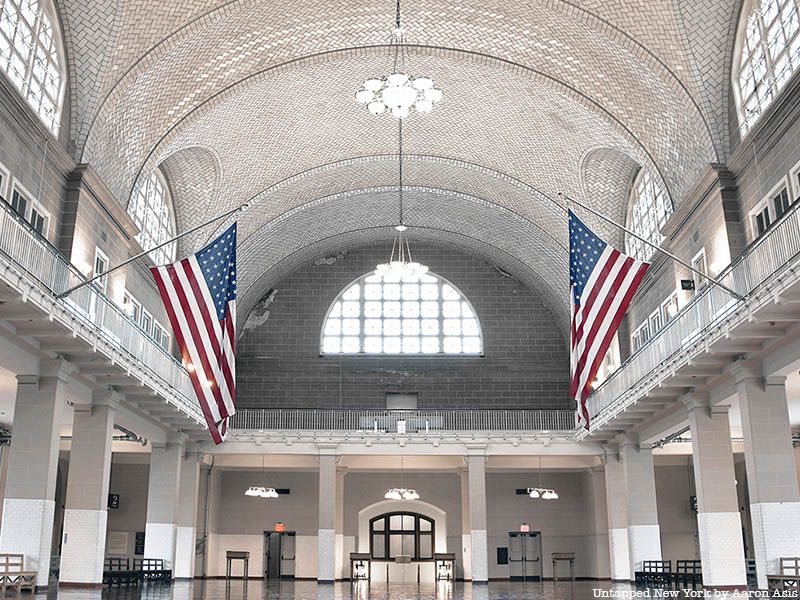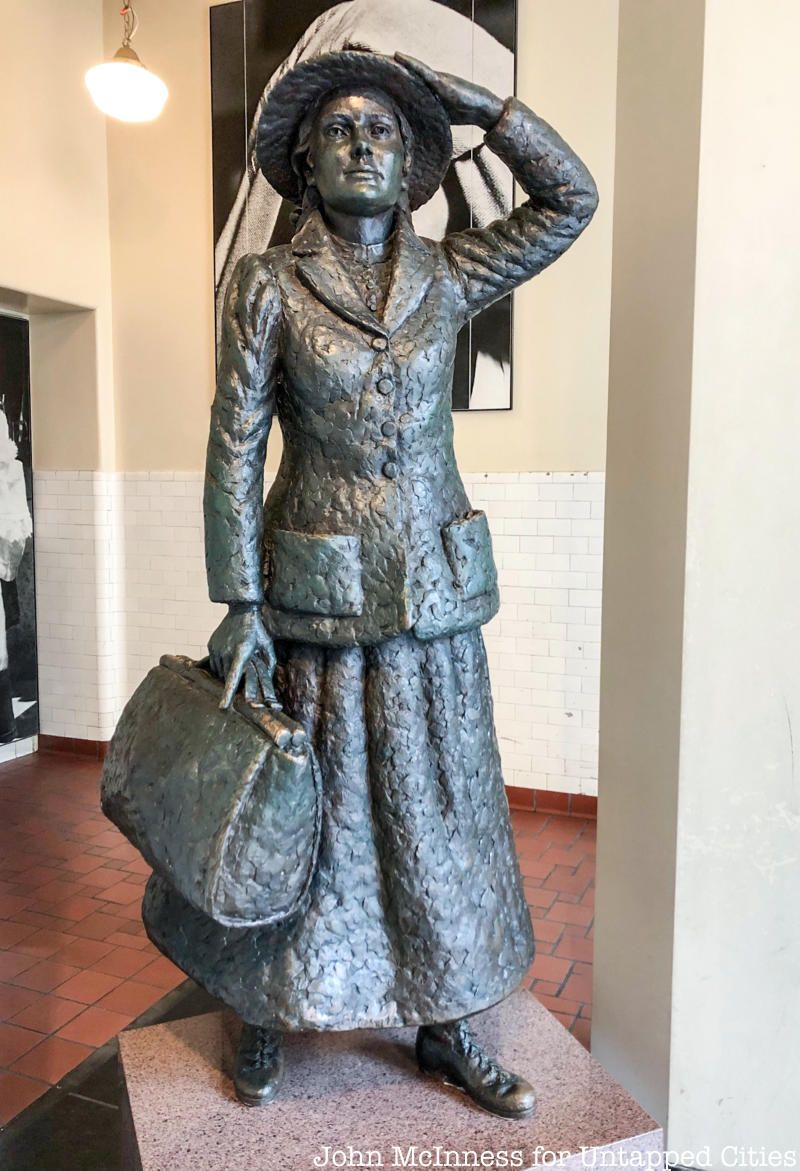NYC’s Forgotten ‘War on Christmas Trees’
Discover how an obscure holiday crackdown affects festive street vendors today!


On New Year’s Day 1892, a seventeen-year-old girl named Annie Moore stepped onto Ellis Island and into a new life in America. The teen and her two younger brothers had just completed a 12-day journey across the Atlantic, spending Christmas at sea after departing from Queenstown, Ireland. They were meeting their parents who had arrived in America a few years earlier. As the very first person to pass through Ellis Island’s immigration station, Moore’s arrival was met with much fanfare and her name was cemented in the history books. However, the story of Moore’s life after her arrival has been shrouded in legend and misinformation.
You can learn more about immigration and health on Ellis Island by joining a hard hat tour of the island’s abandoned hospital complex, led by a Save Ellis Island docent!

Gain access to spaces usually off-limits to the public!
Before the immigration station at Ellis Island was constructed, new arrivals to New York first passed through an Emigrant Depot at Castle Clinton. Between 1855 and 1890, more than 8 million people passed through this station at the southern tip of Manhattan. At Castle Clinton, immigrants had access to services such as currency exchange, references for reputable temporary housing in Manhattan, and the chance to connect with various ethnic Immigrant Aid Societies.
Moore’s arrival at Ellis Island kicked off an opening year that would see 400,000 immigrants pass through the gates. On opening day, three steamships arrived in New York. Moore and her brothers came aboard the SS Nevada with over 140 other steerage passengers. The New York Times described how Moore and the other passengers were transferred from the large ship to a smaller transfer boat that was “gayly decorated with bunting and ranged alongside the wharf on Ellis Island amid a clang of bells and the din of shrieking whistles.”

Once inside the massive building, Moore was escorted to a podium where her name was taken down as the very first in the registry book. When that business was complete, Colonel John B. Weber, the first Commissioner of Immigration, presented the “rosy-cheeked Irish girl” with a $10 gold coin which she told theTimes she would “never part with,” “and always keep as a pleasant memento of the occasion.” Moore and her brothers were then passed on to their parents who were waiting to receive them.
For decades, the true story of Moore’s life after she left Ellis Island has been obscured. The accepted narrative of her life was that she moved to Texas, ran a hotel, and tragically died in a streetcar accident. However, after years of research, professional genealogist Megan Smolenyak uncovered the true story of Moore’s life. Like most immigrants who lived in New York, Moore lived on the Lower East Side and likely never left.

Smolenyak spent years trying to track down the real Annie Moore of Ellis Island after discovering that the Annie Moore of Texas was born in Illinois. She joined forces with Brian G. Andersson, the Commissioner of New York City’s Department of Records at the time, to uncover more details of Moore’s life. Andersson told Untapped New York that the “ah ha” moment came when found the naturalization document of Philip Moore, one of Annie’s brothers. With his access to records not readily available to the public, such as the actual church ledgers that indicated Annie’s marriage, a new narrative of Annie’s life took shape. Smolenyak had offered a $1,000 reward to anyone who could help shed light on the New York Annie Moore’s story. This reward was split between Andersson and one of Moore’s descendants.
Turns out, Moore didn’t marry a descendant of famous Irish patriot Daniel O’Connell as previous claims had stated, but instead married a German baker’s son named Joseph Augustus Schayer. Schayer worked at the Fulton Fish Market. The couple had at least 10 children, though many didn’t survive into adulthood. They lived at multiple addresses throughout the Lower East Side.

Moore died of heart failure in 1924 and was buried in an unmarked family plot in Calvary Cemetery in Queens. Though she never returned to Ireland during her lifetime, her legacy lives on in both New York and her home country. In New York, there is a pub that bears her name in Midtown, as well as a National Park Service boat. A statue of Moore stands proudly inside the Ellis Island National Museum of Immigration. Another statue of Moore, and her brothers, stands outside the Cobh Heritage Centre in County Cork, where she departed from long ago.
Thanks to a campaign led by her direct descendants, Moore’s grave is now marked by a Celtic cross made of limestone imported from Ireland. Limestone is not typically permitted in Archdiocesan Cemeteries due to its inferior quality, but an exception was made for this Irish limestone piece, which is of higher quality. Andersson donated his share of the $1,000 reward to the gravestone campaign.
See the statue of Moore and learn more about immigration history on an upcoming hard hat tour of Ellis Island’s abandoned hospital complex! The tour, led by a Save Ellis Island docent, includes admission to the immigration museum.
Next, check out 9 Surprising Uses of Ellis Island Throughout History
Subscribe to our newsletter